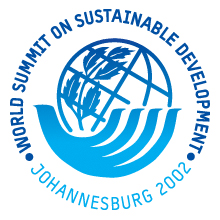Children's Environmental Health Indicators
Description
Description
Child survival hinges on having the basic needs to support life; among these, a safe and healthy environment is fundamental.However, children everywhere are negatively affected by adverse environmental conditions. Each year, at least 3 million children under age five die due to environment-related illnesses. Acute respiratory infections annually kill an estimated 2 million children under the age of 15 and as much as 60% of acute respiratory infections worldwide are related to environmental conditions. Diarrheal diseases claim the lives of nearly 2 million children every year; 80 to 90 percent of diarrhea cases are relates to environmental conditions, especially contaminated water and inadequate sanitation.
The United States is committed to improving children's health through increased collaboration among governments, non-governmental organizations, inter-governmental organizations, the private sector, communities, and UN agencies to protect children from environmental health threats. These environmental health threats include early childhood exposure to chemicals and toxic substances, unsafe and inadequate quantity of drinking water, lack of sanitation infrastructure and inappropriate hygiene, polluted indoor and outdoor air, and vector-borne diseases.
Such threats may lead to health effects ranging from developmental disorder and perinatal diseases, diarrhoeal diseases, respiratory diseases (e.g. asthma), insect-borne diseases (e.g. malaria) and unintentional injuries.
The goal of this multi-year initiative is to develop and use children's environmental health indicators to improve children's environmental health at global, regional, national and local levels. These indicators are similar to economic indicators and their development and reporting will help fill gaps between information on environment and information on health, putting into focus the special vulnerabilities of children. Ultimately, these indicators will help guide environment, health and development policy. Global children's environmental health indicators are effective tools to:
- Improve the quality of information available in order to facilitate the ability of policy-makers to improve environmental conditions for all children;
- Assess children's environmental health and monitor the success or failure of interventions to address children's environmental health problems; and
- Measure progress and contribute towards the achievement of the Millennium Development goals.
The United States is committed to improving children's health through increased collaboration among governments, non-governmental organizations, inter-governmental organizations, the private sector, communities, and UN agencies to protect children from environmental health threats. These environmental health threats include early childhood exposure to chemicals and toxic substances, unsafe and inadequate quantity of drinking water, lack of sanitation infrastructure and inappropriate hygiene, polluted indoor and outdoor air, and vector-borne diseases.
Such threats may lead to health effects ranging from developmental disorder and perinatal diseases, diarrhoeal diseases, respiratory diseases (e.g. asthma), insect-borne diseases (e.g. malaria) and unintentional injuries.
The goal of this multi-year initiative is to develop and use children's environmental health indicators to improve children's environmental health at global, regional, national and local levels. These indicators are similar to economic indicators and their development and reporting will help fill gaps between information on environment and information on health, putting into focus the special vulnerabilities of children. Ultimately, these indicators will help guide environment, health and development policy. Global children's environmental health indicators are effective tools to:
- Improve the quality of information available in order to facilitate the ability of policy-makers to improve environmental conditions for all children;
- Assess children's environmental health and monitor the success or failure of interventions to address children's environmental health problems; and
- Measure progress and contribute towards the achievement of the Millennium Development goals.
Partners
Governments:
Government of United States of America - U.S. Enivronmental Protection Agency (USEPA)
Government of Canada
Government of Italy
Government of Mexico
Government of South Africa
Government of United States of America
Major Groups:
International Network for Children's Health, Environment and Safety (INCHES) (Netherlands)
International Society of Doctors for Environment (ISDE) (Switzerland)
Physicians for Social Responsibility (PSR) (United States of America)
UN System:
United Nations Environment Programme (UNEP) (Kenya)
World Health Organization (WHO) (Switzerland)
United Nations Children's Fund (UNICEF) (United States of America)
Other intergovernmental organizations:
Commission for Environmental Cooperation (CEC) (Canada)
Org for Economic Co-operation & Development (OECD) (France)
Government of United States of America - U.S. Enivronmental Protection Agency (USEPA)
Government of Canada
Government of Italy
Government of Mexico
Government of South Africa
Government of United States of America
Major Groups:
International Network for Children's Health, Environment and Safety (INCHES) (Netherlands)
International Society of Doctors for Environment (ISDE) (Switzerland)
Physicians for Social Responsibility (PSR) (United States of America)
UN System:
United Nations Environment Programme (UNEP) (Kenya)
World Health Organization (WHO) (Switzerland)
United Nations Children's Fund (UNICEF) (United States of America)
Other intergovernmental organizations:
Commission for Environmental Cooperation (CEC) (Canada)
Org for Economic Co-operation & Development (OECD) (France)
SDGS & Targets
N/A
SDG 14 targets covered
Deliverables & Timeline
N/A
Resources mobilized
N/A
Partnership Progress
No progress reports have been submitted.
Please sign in and click here to submit one.
False
Feedback
Action Network


This initiative does not yet fulfil the SMART criteria.
Timeline
01 January 1970 (start date)
01 September 2008 (date of completion)
Entity
N/A
Goals
N/A
More information
Countries
N/A
